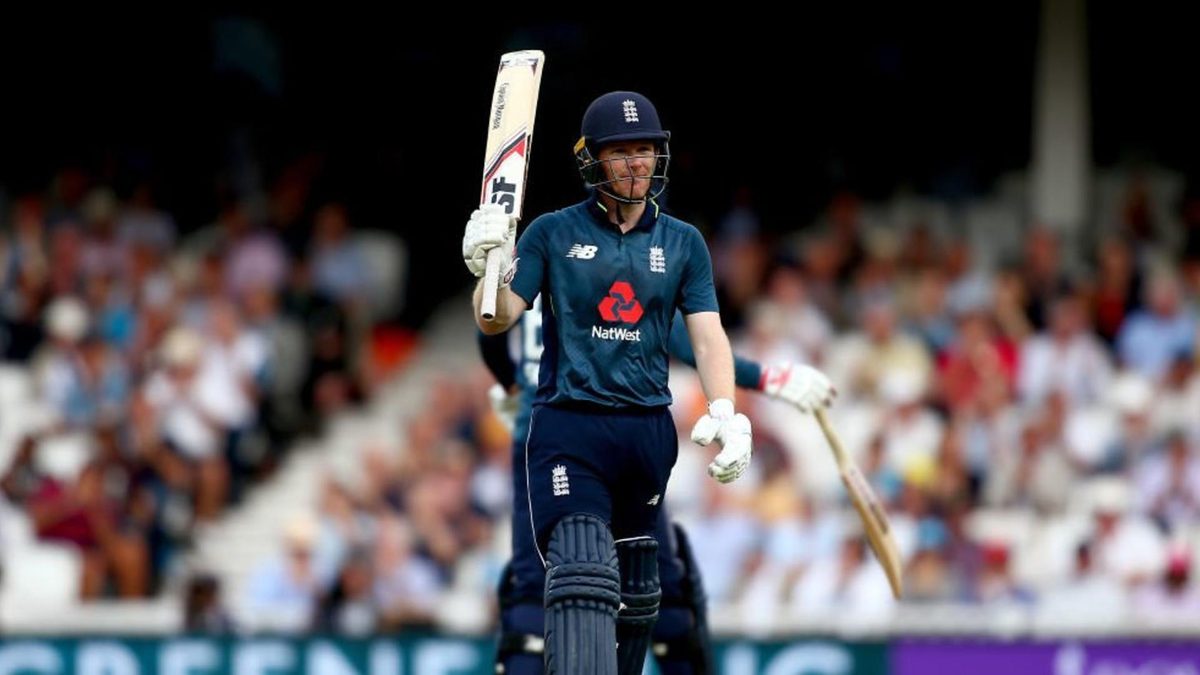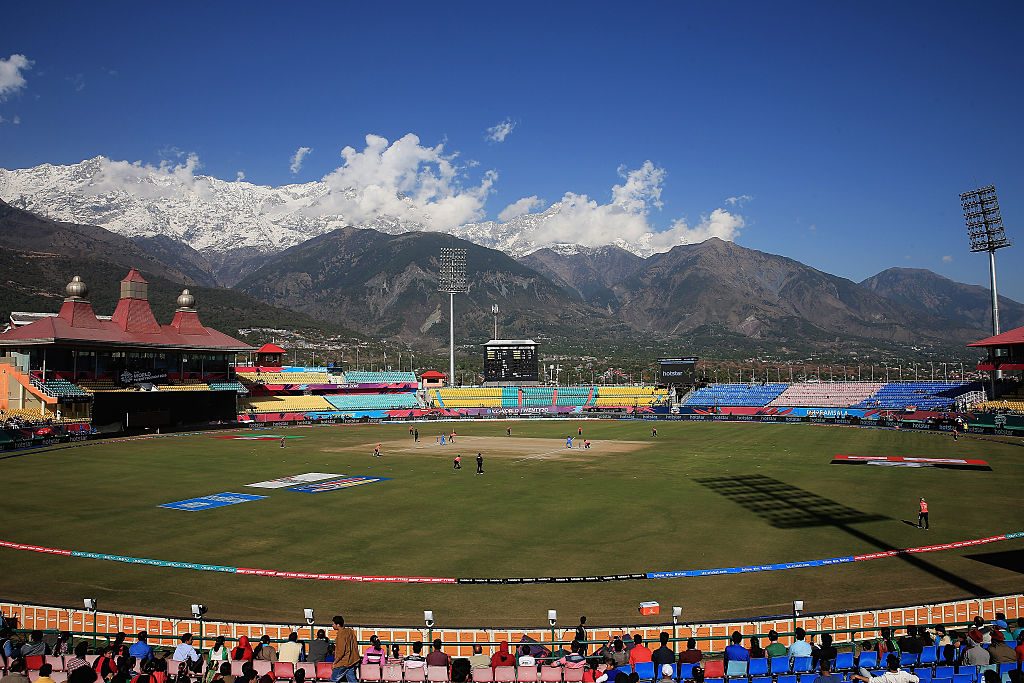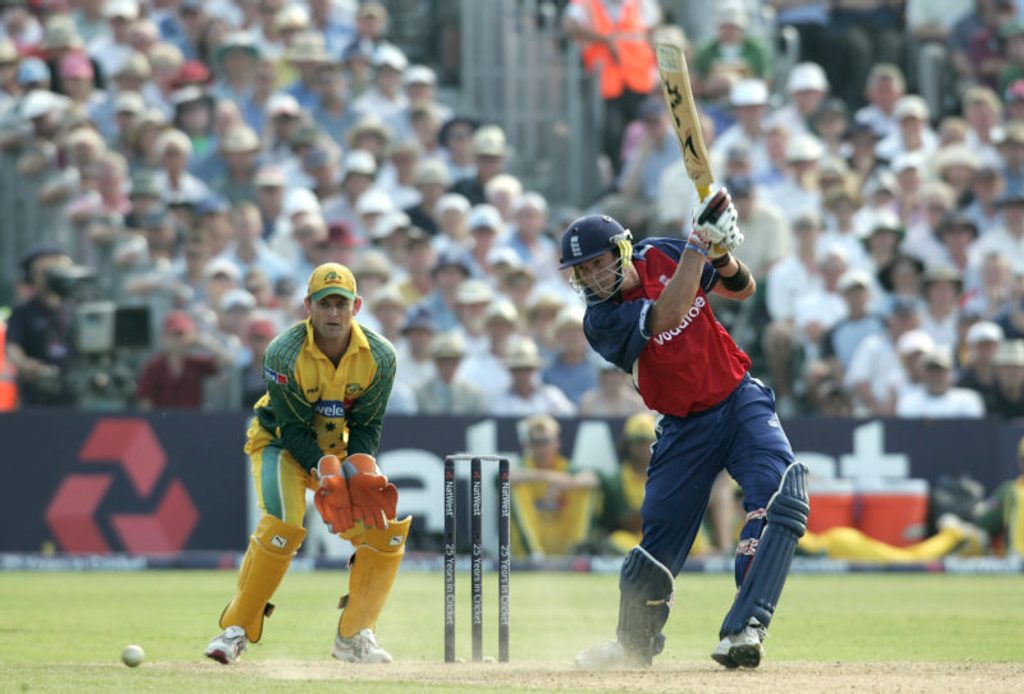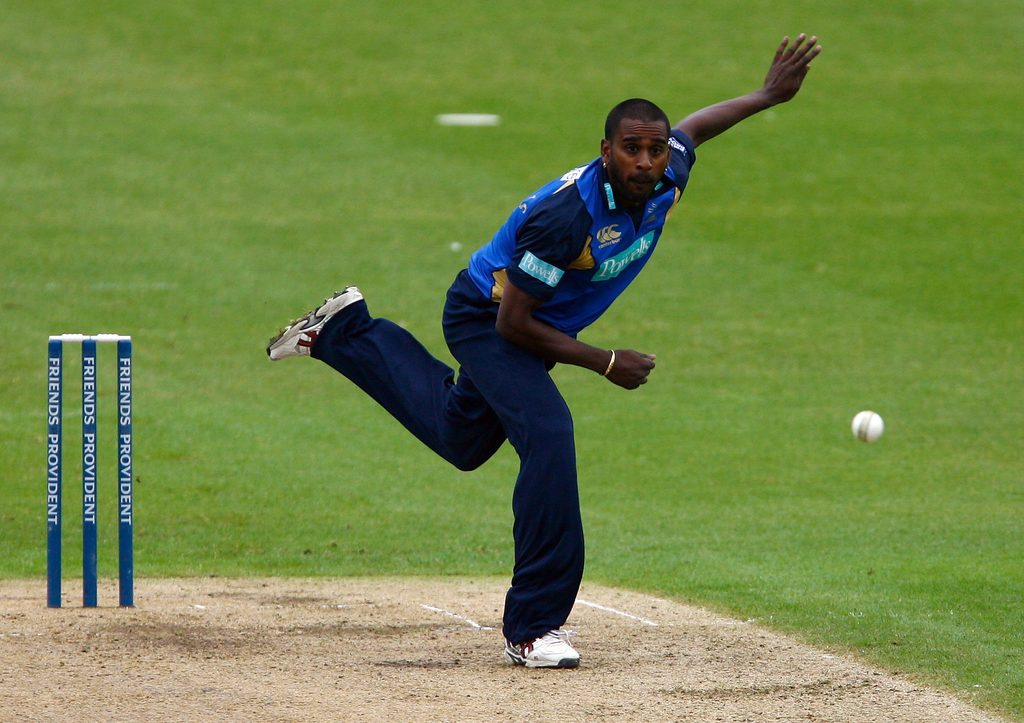
Richard Hobson on life as a one-day cricket correspondent – and the charms of cricket’s most maligned format.
This article first appeared in The Nightwatchman, the Wisden Cricket Quarterly
Buy the 2018 Collection (issues 21-24) now and save £5 when you use coupon code WCM7
Originally published in 2014
Back in 1985, the cricket writer and broadcaster Don Mosey wrote a book called The Best Job in The World. Its 208 pages seem pre-occupied with demonstrating why travelling the world and writing about cricket is anything but. According to the sole review on Amazon (where you can find a second-hand copy for a penny): “Mosey didn’t seem to like most of the places he visited or most of the people he worked with.”
I never met Mosey. Like the majority I knew him only as a plummy voice on Test Match Special who goaded his fellow Yorkshireman Fred Trueman into seeing southern conspiracies on the field of play. Colleagues called him The Alderman for the self-important air that recalled one of JB Priestley’s puffed-up civic heads. And in the book Mosey broke a golden rule of sports writing: never bemoan your fate because the public will have no sympathy.
This doesn’t just apply to the exalted level scaled by Mosey. Covering Nottinghamshire for the local paper 20 years ago I had the temerity to ask the editor for a modest pay rise to bring me in line with the news reporters. “Now look son,” was the gist of the reply. “I could get a queue of people twice round the Market Square to do your job for nothing.”
[breakout]Nottingham was full of people happy to snatch my Trent Bridge pass and watch the Test match for nothing[/breakout]
He meant – but as keeper of the purse strings would never admit – that Nottingham was full of people happy to snatch my Trent Bridge pass and watch the Test match for nothing. There was no point talking about the hours hanging around outside county dressing rooms for a quote, the long drives back from Canterbury, Taunton or the north-east, or the green-ink letters from readers blaming me for the non-selection of whoever happened to have played well for the 2nd XI the previous week. My boss wouldn’t have budged.
So I am hacking out the next 1,500 words or so with some trepidation. I may lurch into Mosey territory, but ask to be heard out because years of repressed frustration area about to be unleashed.
Nearly a decade ago, after a typical piece of clever lateral thinking by the old sports editor of the Times, Keith Blackmore, I became the world’s first one-day cricket correspondent. As it happens, I am now the world’s only ex-one-day cricket correspondent, but in truth little has altered with a change in title. I still work for the Times as the de facto cricket number two. I cover slightly fewer one-day internationals at home than I once did, but rarely miss anything overseas.
[caption id=”attachment_74317″ align=”alignnone” width=”1024″] The beauty of Dharmsala has distracted the likes of Virat Kohli[/caption]
The beauty of Dharmsala has distracted the likes of Virat Kohli[/caption]
No-one would call it the best job in the world, but to slip into the parlance of sporting punditry, it’s up there – certainly much better than anything I dared imagine as a kid back in the days when careers lessons included a first sight of the dreaded UB40. Schedules are hectic and journalists spend much time checking in and out of airports and hotels. The upside is the number of grounds and places to visit. Sometimes the variety is dazzling. On England’s last India tour in January we took in the great city of Delhi with its mix of old and new, the trading port of Kochi with its Portuguese, Dutch and British influences, and the adopted city of the Dalai Lama, Dharamsala. Virat Kohli admitted that the first time he played there he struggled to concentrate because of the scenic backdrop of snow-capped Himalayan peaks. Then there was the experience of seeing MS Dhoni in the build-up to the first ever international in his home city. Ranchi put on its very best dress, its people turned out in tens of thousands and when Dhoni pulled Steve Finn for the winning four the reception was as heartfelt as the one in Mumbai two years earlier when he lifted the World Cup for India.
I have watched great players and listened to myriad personalities. I saw Kevin Pietersen win his first man of the match award for England in Harare in 2004. He walked into the press box (he was still talking to us in those days) and slapped a big brown envelope stuffed with Zimbabwe dollars onto the table like Harry Enfield’s ‘Loadsamoney’. Two months later, he was about to celebrate finishing England’s innings in East London by completing a 69-ball century, only to remember that he’d reached the landmark in vain. No ‘I’ in team, Kevin! Best of all was his match-winner at Bristol in the year of the skunk 2005, an innings marking the beginning of the end of Jason Gillespie’s Australia career.
[caption id=”attachment_74315″ align=”alignnone” width=”800″] Pietersen in Bristol, 2005 – a memorable day[/caption]
Pietersen in Bristol, 2005 – a memorable day[/caption]
Other memories, too: Paul Collingwood driving Glenn McGrath back over his head on a balmy evening in Melbourne in 2007, and Liam Plunkett yorking Adam Gilchrist first ball in Sydney two nights later. Then there was Eoin Morgan’s 85-ball hundred against Australia at the Rose Bowl in 2010, the best one-day innings I’ve seen for England. From the opposition there is Kevin O’Brien’s World Cup century for Ireland in Bangalore. As fruit bats were flying around the stands, cricket balls were being knocked into them. O’Brien had dyed his hair pink for charity and looked like a punk rocker waving two fingers to the English establishment. And I have never been among a more frenzied crowd than at the India/Pakistan World Cup game in Centurion in 2003 when Tendulkar and Sehwag outwitted that great showman Shoaib Akhtar, who was then at the 100mph peak of his powers.
The happiest two or three weeks were at the Champions Trophy in India in 2006. Remember the Champions Trophy? That was the tournament that was so short, sharp and successful in England in 2013 that the ICC decided its time was up. The sharpness in 2006 was in the piece of steel jutting from the roof of a stand at the Brabourne Stadium in Mumbai. I banged my head on it en route to the press box and needed seven stitches in the wound. Indian journalists like to make fun of English sensibilities. “You must put ice on it,” ordered the motherly Neeru Bhatia of The Week magazine out of concern for the bleeding wound. “No ice, no ice,” I shrieked in panic, as though my head was a glass of gin and tonic about to be infected by conspiratorial bacteria as per the Lonely Planet guide.
As it happened, the treatment was quicker than anything in A&E back in England (perhaps greased by a guilty BCCI palm) and I returned only slightly dazed in time to write 750 words about the West Indies victory over Australia. A few days later, I commuted from Jaipur to Delhi to sit an Open University exam with Neeru testing me on The Odyssey from the back seat of the car through the six-hour journey to the British Council building. And then we had a fantastic game between England and Australia in Jaipur on Diwali night. It was my first sight of Mitchell Johnson; he bowled to neither the left nor the right, merely very straight and very fast. To complete the evening, our tuk-tuk driver nearly ran into an elephant en route back to the hotel. You don’t forget something like that.
[breakout]Our tuk-tuk driver nearly ran into an elephant en route back to the hotel. You don’t forget something like that[/breakout]
Yes, I have grown to treasure one-day cricket. But covering it can be a frustrating affair. I feel more and more like the warden of a nature reserve battling to save an endangered species. Instead of greedy poachers and environmental changes the enemies are disinterest, prejudice and downright ridicule. Countries rest their leading players, space in the papers is reduced and the most senior sports writers stay away. Authorities are forever tinkering. Fifty years after the format was born in England as a full-on county competition, to be described as a “one-day specialist” is meant as an insult rather than praise.
I have been the press box equivalent of Adam Hollioake or Dimitri Mascarenhas. Soon after my appointment, The Guardian’s Stephen Moss, who dabbles in sport, wrote: “Christopher Martin-Jenkins loathes one-day cricket so much that the Times has had to designate Richard Hobson as its one-day cricket correspondent.” Poor old CMJ could never “loathe” even the direst cricket match. Rob Steen, a distinctive writer turned lecturer, was closer to the truth in his book Sports Journalism: A Multi-Media Primer. To Steen, the decision was made so that CMJ could “concentrate on the longer variety and hence maintain his appetite.” The idea was actually that by appointing a specialist, the Times would raise the profile of its one-day coverage. It worked, for a while.
Yet the jokes soon started to fly. If I’d saved a pound for every time someone asked whether being one-day correspondent meant working one day a week then I probably wouldn’t be operating now. Even the Sunday correspondents peddled the line, which really did feel like a case of pots and kettles.
The ribbing stemmed from a hierarchy that goes unchallenged, that Test cricket is the premier form of the game. Everything else should have an asterisk next to the scorecard to remind it is “not the real thing”. Even when something is reluctantly deemed to be good about one-day cricket, it can be placed in a Test match context. History now has the limited-overs series versus Australia in 2005 (which England actually lost) as a softening-up exercise before the Ashes.
[caption id=”attachment_74316″ align=”alignnone” width=”800″] Hobson: journalism’s Dimi Mascarenhas[/caption]
Hobson: journalism’s Dimi Mascarenhas[/caption]
Let’s go back to the very basics. The idea that Test cricket represents the purest form of the game is a fallacy. Give a young boy or girl a cricket bat, underarm a ball to them gently and see what happens. You will get a full, joyful swing of the bat, not an immaculate forward defensive. This is cricket at its most instinctive and pure, unadulterated by coaches preaching the high left elbow.
Sure, the one-day game isn’t perfect. Too many fixtures compressed into a short span (England and South Africa once contested seven in a choking 15-day period) is overkill and impinges on quality. But even then a vast majority of spectators will attend only one of them. The opinion-formers who follow the circus match by match and struggle to contain their boredom should remember that. A highly-esteemed correspondent asked rhetorically how many of the crowd swaddling for warmth on a perishing night at the Rose Bowl in September would be able to recall the game between England and Australia. Most of them, is the answer, because they get to see Australia live once in a blue moon.
Besides, it isn’t as though each and every Test match is memorable. The Ashes meeting at Trent Bridge in July was a fantastic affair. There was enough pathos in Ashton Agar’s surprise debut and his 98 from the No. 11 position even without the nail-biting climax and the controversy over Stuart Broad’s refusal to walk. But the next game at Lord’s was too one-sided, the third washed out. England were booed for slow-scoring in the fifth.
We take the mickey out of America’s refusal to understand that a game lasting five days without producing a winner can be time well spent. Our friends across the pond have a point. If Test cricket is so enthralling, why do spectators feel the need for Mexican waves and beer snakes by way of digression? Why do they turn up in fancy dress so that a day at a Test feels like sport’s equivalent of a stag trip to Prague? Play in the middle can’t be interesting enough.
[breakout type=”related-story” offset=”0″][/breakout]
I am writing this in the middle of a one-day series between India and Australia. At seven matches it is probably a bit long, and they’ve had a bit of rain. But the sounds coming from Mohali, Jaipur and Pune appear to be cheering rather than a death knell. Only once in the first six innings has a side failed to reach the run-a-ball mark of 300. MS Dhoni has hit 139 not out from 121 balls yet been trumped by James Faulkner. Virat Kohli has cracked a 52-ball hundred and India have scored 362 for 1 – for 1! – from 43.3 overs. After a thorough trawl of the internet – we hacks are good at that – I am yet to read an article bemoaning ‘formulaic middle overs’ or lamenting empty seats.
One-day cricket is in a golden age, if only we could see it. All it needs is an arm around the shoulder and some TLC. Rather than being squeezed in a pincer movement by the Test and Twenty20 formats it can spread its elbows and find the perfect niche in between the two. Its biggest asset is the very duration that screams from the tin. It is a whole day out, no more, no less.
For subtlety it offers more than the 20-over bash. A 50-over match is long enough for ebb and flow. Batsmen cannot afford to risk losing wickets (until the closing stages) with the risky, hopeful slugging that characterizes a high proportion of Twenty20. At times they must dig in, consolidate, see a bowler out of the attack and calculate when to change tempo. The bowler, meanwhile, has long enough to find his rhythm.
[breakout type=”related-story” offset=”1″][/breakout]
But it is more exciting than most of Test cricket. Batsmen cannot spend hours in their shell and bowlers have stricter limits on what is a wide. Fielding restrictions check the defensive thoughts of a captain. Time-wasting is futile because ultimately the overs must be bowled. Most of all, the absence of draws guarantees a winner – unless there is a tie, in which case no spectator except the most partisan will ever feel short-changed.
Think of the format as Twenty20 with brains or Test cricket in a day. And give it a chance.








